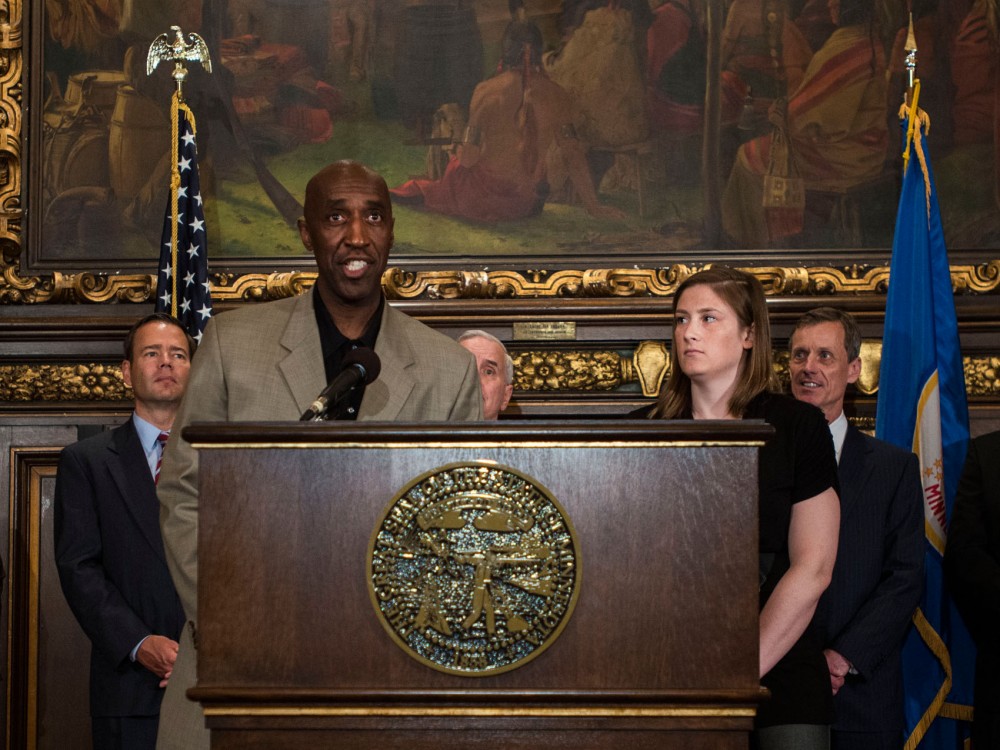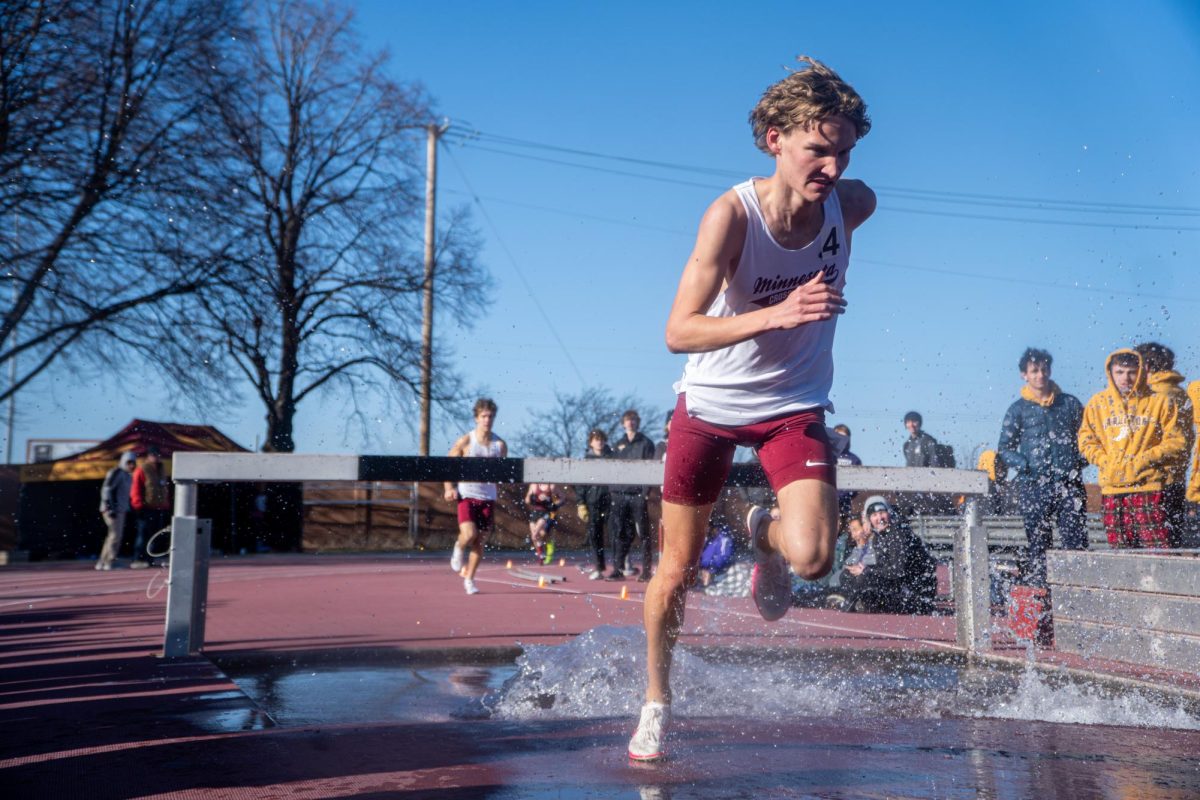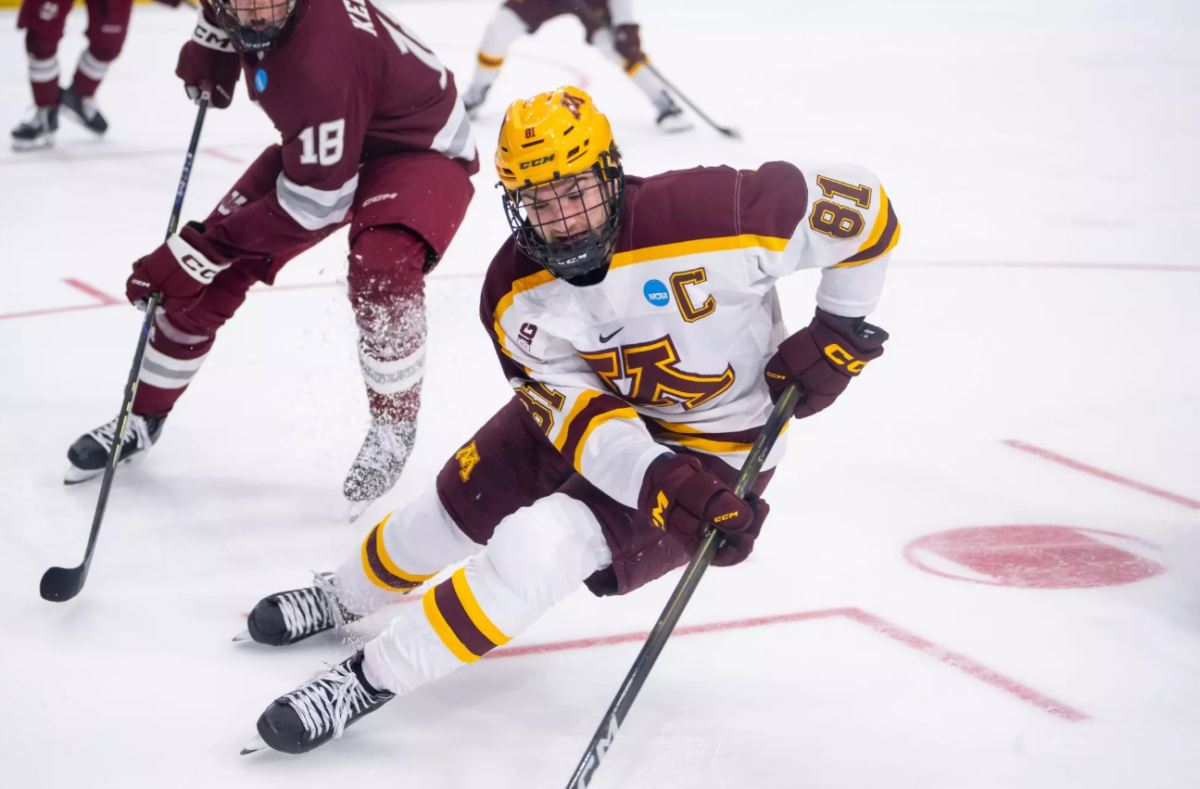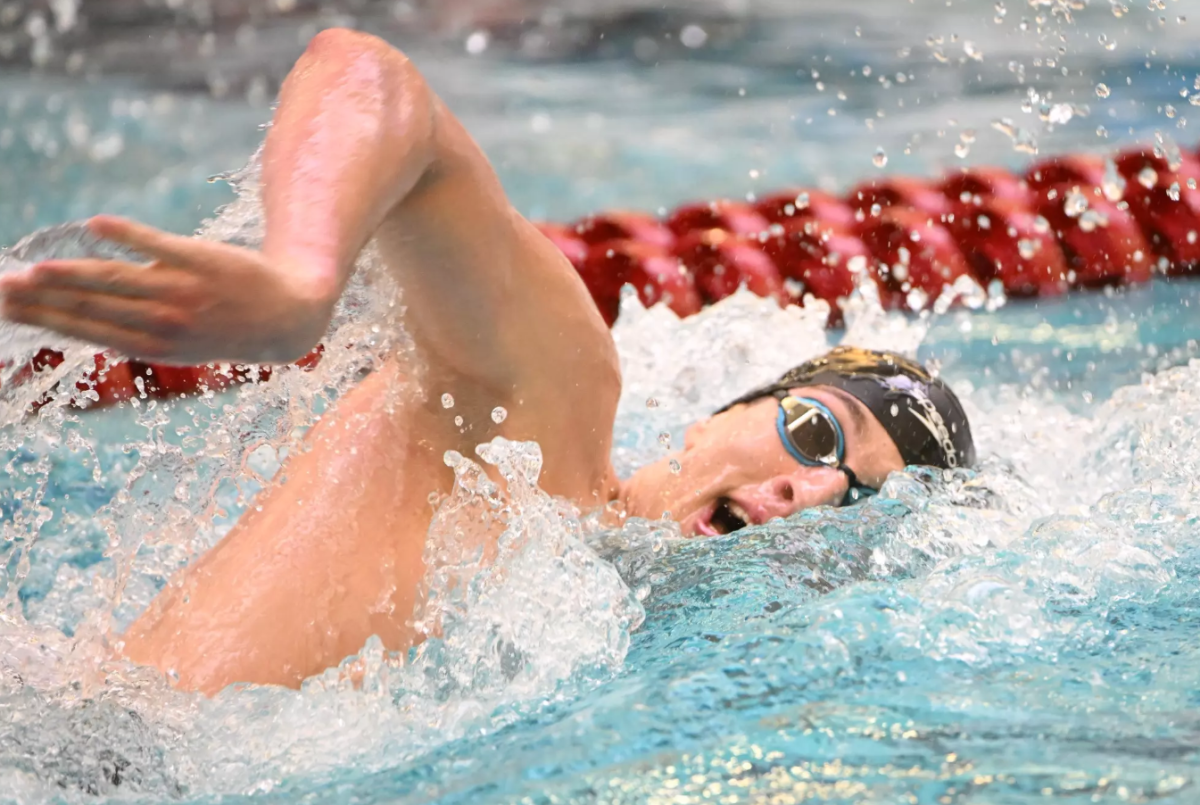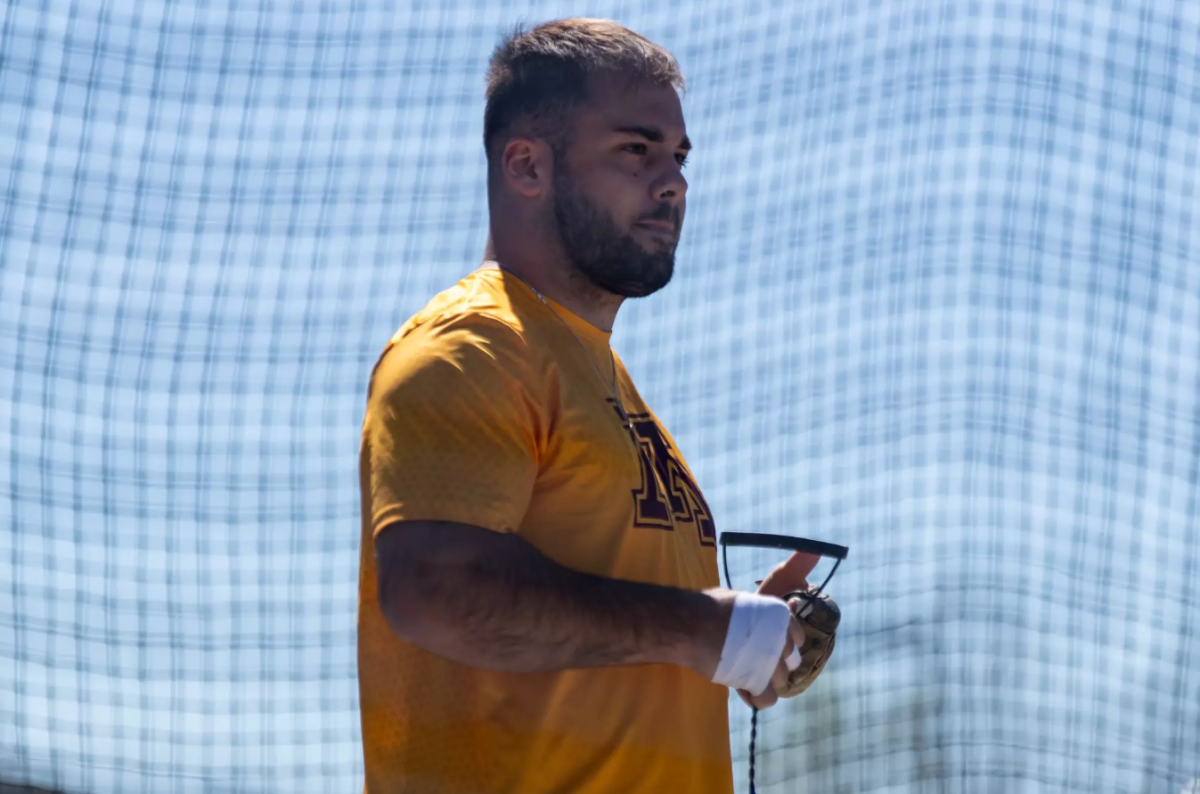Following a recent successful bid for the 2018 Super Bowl, Minnesota leaders are seeking another high-profile event for when the new Vikings stadium opens in two years.
Gov. Mark Dayton announced on Tuesday the state’s bid to secure the Final Four for the NCAA men’s basketball tournament in either 2019 or 2020, which proponents say could bring millions of dollars to Minnesota’s economy.
The bid steering committee’s application to host the tournament focuses in part on Minneapolis’ close ties with the University of Minnesota. The committee includes Andrew Parrish, an associate athletics director from the University, as well as former Gophers basketball stars Trent Tucker and Lindsay Whalen, who will serve as honorary co-chairs.
“When we talk about having a major university that sits in the heart of the city — I don’t think any other city can compare to that,” Tucker said. “So I think our time is now.”
The new Vikings stadium is still just a crater surrounded by mounds of dirt in downtown Minneapolis, but state leaders have already been pushing to host major events in the multi-purpose venue that will open in 2016.
“These bids are all due well in advance,” said Michele Kelm-Helgen, chair of the Minnesota Sports Facilities Authority. “If you want to be able to host any of these events in the first five years, you have to compete now.”
The NCAA is scheduled to announce hosts for the 2017-2020 Final Fours in November.
More than just games
The Final Four, which Dayton said will require no public funds to host, could bring the region an estimated $70 million to $200 million in revenue, according to a news release from the governor’s office.
While the focus of the Final Four will be on the games themselves, major sporting events are now entertainment spectacles designed to bolster the fan experience.
Mary Brainerd, president and CEO of HealthPartners, Inc. and co-chair of the steering committee, said that bringing the Final Four to Minneapolis in March when there’s “a lull in tourism” will help businesses in Minnesota.
“It’s about engaging and welcoming fans and visitors and offering a lot of very exciting events and activities,” she said.
The multitude of entertainment activities surrounding major sporting events requires a navigable city with certain amenities, and Brainerd said the committee feels Minneapolis is well equipped to handle that demand.
Opportunity to host more
The new Vikings stadium was designed to be able to host major events like the Super Bowl and Final Four, said David Mortenson, co-chair of the committee and president of Mortenson Construction.
The steering committee is already considering more high-profile events past just those two, including a Bowl Championship Series college football game, Kelm-Helgen said.
“BCS has already expressed interest. We’ve heard … possibly a Frozen Four could be held here,” she said.
But for now, the committee’s efforts are focused on the Final Four bid.
Whalen, the former Gopher, played in the 2004 Women’s Final Four in New Orleans and said she hopes she can help bring the tournament back to her home state.
“I still have people talking to me today about how great their experience was down in New Orleans,” she said. “I think just for people to have that experience here in Minnesota would be really unbelievable.”
Better than existing sites?
Minnesota has hosted three Final Fours in the past: 1951, 1992 and 2001.
Dayton said at the press conference that he remembers going to the 1992 games at the Metrodome with binoculars in hand, wishing he had brought a telescope as he squinted down from the rafters to the court far below.
Final Four games in football stadiums can negatively impact sightlines because basketball courts are much smaller than football fields.
The 2014 Final Four, played at 80,000-person capacity AT&T Stadium in Arlington, Texas, was met with criticism from some fans that paid hundreds of dollars to get into the arena but could barely see the action. Large video boards hanging above the court in certain stadiums can also obstruct spectators’ views.
However, Kelm-Helgen said Minnesota’s new stadium will hold about 70,000 people for basketball games and will have the NFL’s largest end-zone scoreboards, instead of one that occupies the middle of the field.


